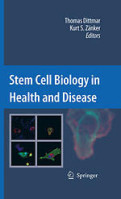Im Rahmen des "Austrian Life Sciences Programme 2023" hat die Molthera GmbH als Partner des Salzburg NAM Research Institute unter Leitung von Prof. Dr. Fritsch mit Univ.-Prof. Dr. Dr. Grimm als "leading scientist" einen Forschungsantrag zum Thema "aerolisierte oNCSCs zur Regeneration der Lungengewebe bei Long Covid Novel" gestellt.
Partner des Antrages sind Prof. Dr. Badrul Hisham Yahaya (Ph.D.) Regenerative Medicine Cluster, Advanced Medical and Dental Institute, Universiti Sains Malaysia, Bertam, Penang, Malaysia, Prof. Dr. D. Widera, Reading, UK, Prof. Dr. O. Andrukov, Regenerative Periodontology, Vienna, Austria, Univ.-Prof. Dr. Andreas Rembert Koczulla, Philipps University Marburg
In a Nutshell
There is pressing urgency to understand the pathogenesis of the severe acute respiratory syndrome coronavirus clade 2 (SARS-CoV-2), which causes the disease COVID-19. SARS-CoV-2 spike (S) protein binds angiotensin-converting enzyme 2 (ACE2), and in concert with host proteases, principally transmembrane serine protease 2 (TMPRSS2), promotes cellular entry. The cell subsets targeted by SARS-CoV-2 in host tissues and the factors that regulate ACE2 expression remain unknown. Using the results of a recently published study we can leverage human, non-human primate, and mouse single-cell RNA-sequencing (scRNA-seq) datasets across health and disease to uncover putative targets of SARS-CoV-2 among tissue-resident cell subsets. The data suggest that SARS-CoV-2 could exploit species-specific interferon-driven upregulation of ACE2, a tissue-protective mediator during lung injury, to enhance infection. Acute lung pathology (ALI) associated with severe COVID-19 develops under the influence of imbalance between proteases and antiproteases. Neural crest-derived Stem cells (NCSCs) have the unique ability to change into any cell in the body. Recent evidence suggests that several of the beneficial effects of human NCSC therapy can be attributed to paracrine effects of the NCSC secretome. As with many groundbreaking discoveries, the importance of research on microparticles, microvesicles and exosomes was not immediately apparent. Almost 15 years ago, our research team started to be interested in oral-derived NCSCs, based on observations in periodontology clinics that showed that new periodontal tissue seems to regenerate based on these stem cells. Since then, we have been able to characterize oral-derived NCSCs comprehensively as multipotent stem cells in vitro and ex vivo and to demonstrate their regenerative abilities in small and large animals. The regenerative abilities of oral-derived NCSCs were comparable to those of embryonic stem cells and reprogrammed stem cells. Later, experimental studies by our partner teams from the Universiti Sains Malaysia, Bertam, Penang, Malaysia showed that conditioned media (CM) of NCSCs released small membrane fragments during the experimental regeneration process. Notably, their therapeutic potential is nowadays believed to be a consequence of a combination of integration and paracrine modulation of endogenous regeneration mediated by a multitude of secreted immunomodulatory, anti-inflammatory, and regenerative factors (cellular products). We could show that the secretome of NCSC has great potential as a therapeutic agent in regenerative medicine, demonstrating that the full secretome can promote stem cell proliferation, migration and protection of cells against senescence. Furthermore, it has significant anti-inflammatory properties. We then demonstrate that the secretome contains extracellular vesicles (EV) that harbour much but not all the biological activity of the whole secretome. Proteomic characterization of the EV and free secretome fraction show the presence of numerous molecules specific to each fraction that could be key regulators of tissue regeneration. Intriguingly we show that the EVs only contain miRNA and not mRNA. This suggests tissue regeneration in the host is mediated by the action of EVs modifying existing, rather than the imposition of new, signaling pathways in accordance to. More specifically, NCSC derived EVs have been implicated as the principal active agents of the NCSC secretome. The paracrine aspect of NCSC function involves the directed uptake of NCSC derived EVs by target cells. Further, the multilineage differentiation potential of NCSCs suggests that lineage specific function could be reflected as lineage specific exosomal effects on naïve target cells. Harnessing the fundamental mechanistic features of EV-mediated signaling can be turned into an application-specific tool to direct lineage specific tissue repair/regeneration and disease treatment. With these goals in mind, the present study characterizes basic mechanistic aspects of NCSC EV function in repair of acute lung pathologies. When used regarding COVID-19 associated acute lung pathology, CM of NCSCs can repair damaged lung tissue to combat lung complications. CM of NCSCs can be administered by using aerosols and find damaged tissues around lungs.



